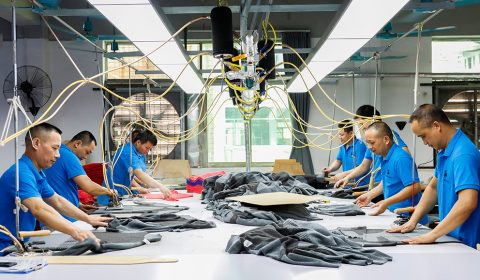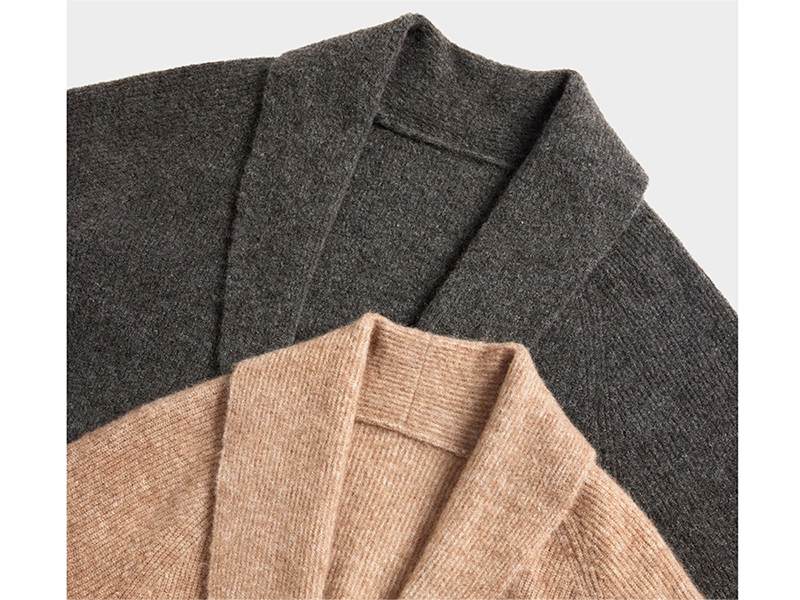Handcrafting represents the maker’s unique attention to the product, with each step reflecting its deep knowledge of materials and attention to detail. In the process of making wool products by hand, the craftsmen through rich experience and skills, hand knitting, cutting and decoration, making each product become a unique art. Handmade not only makes the products more quality, but also conveys a kind of cherish for the traditional craft, through the manual meticulous treatment, wool products can present a unique texture and appearance.
Handmade also provides consumers with a shopping experience that is antithetical to mass production. Buying handmade wool products is not only a commodity transaction, but also a connection with the maker and support for the heritage of traditional craftsmanship. This intimate experience makes people more able to feel the craftsmanship behind the product and the pursuit of quality, thus increasing consumers’ trust and satisfaction with wool products.
Handmade value
Handmade represents a traditional art form, defined and characterized by the pursuit of meticulousness, patience and craftsmanship. This method of production focuses on the participation of individual artisans, and each product is carefully crafted by a skillful hand artist. Handmade is different from mechanical production, it reflects the creator’s unique aesthetic and deep understanding of the craft.
Handmaking is a traditional art form that emphasizes the craftsmanship and attention to detail of individual artisans. Handcrafting often involves traditional tools and techniques, and each step is done manually, highlighting the mastery of the material and the creator’s deep understanding of the work. This method is not only a mode of production, but also an expression of cultural heritage and originality.
In handcrafting, each product is unique because it is shaped by the skills and aesthetics of individual artisans. Handmade does not pursue quantity, but quality. This uniqueness makes handmade products even more precious, as each piece is a unique expression created by the artist with the heart.
Handmade has unique advantages in improving the quality of wool products. First of all, the wool fiber can be handled more carefully by hand, ensuring its texture uniformity and softness. Artisans are able to personalize the treatment according to the different characteristics of the wool, making the final wool product more comfortable and warm.
Secondly, handmade attention to detail, can better grasp the texture and structure of wool products. Hand-weaving and weaving techniques can interlace wool fibers in more complex ways, creating unique patterns and textures. This personalized design not only enhances the artistic value of wool products, but also increases their touch and appearance appeal.
In improving the quality of wool products, hand dyeing technology is also an indispensable part. Hand dyeing can better control the depth and uniformity of color, giving wool products a richer and more unique color. Compared with mechanical dyeing, the advantage of manual dyeing is more accurate color mixing, making wool products more layered and quality in color.
The role of traditional craftsmanship in wool processing
Wool processing is a complex and delicate process that takes several steps from the sheep to the final product. First of all, the collection of wool needs to be done carefully to ensure the integrity and quality of the hair. This involves careful pruning to avoid damaging the hair follicles and to maintain the length of the wool fibers. The collected wool needs to be washed to remove impurities, grease and dirt. The process requires meticulous hand work to ensure that the hair remains soft and clean.
Next comes the sorting of the wool, which classifies the hair according to its length, texture and colour. The traditional sorting process relies on experienced artisans who judge the quality of the wool by observation and feel. This step requires a high degree of craftsmanship and expertise to ensure that the final product has an even and consistent texture.
Traditional processes play a key role in the quality formation of wool products. First of all, the manual processing process pays attention to the careful treatment of each raw material, avoiding the damage that may be caused by mechanical processing. Manual sorting can better retain the natural gloss and fiber integrity of the wool, making the final product have a better feel and feel.
Traditional hand-spinning and hand-weaving techniques further affect the quality of wool products. Hand spinning can not only better maintain the fiber structure of the wool, but also adjust the thickness and tension of the yarn according to the design needs. Hand weaving focuses on the careful arrangement of each yarn to ensure that the final fabric is uniform and elastic.
Handmade process details
Handwork plays a crucial role in the production of wool products, especially in the fibre sorting and handling stages. Traditional hand sorting techniques, often carried out by experienced artisans, are able to examine the texture, length and colour of the wool in minute detail. This manual sorting not only removes bad fibers, but also helps retain more high-quality fibers, ensuring the quality of the final product. In the process of manual sorting, the craftsman will identify the characteristics of the fiber by experience, so that the final wool fiber is more pure and even.
Handwork also plays a key role in the wool fiber processing stage. Traditional hand washing techniques ensure the thorough removal of impurities and oils from the wool without damaging the natural structure of the fiber. With gentle detergents and hand manipulation, craftsmen care for each fiber to ensure its softness and fineness are maintained. This manual treatment not only provides better treatment results for the wool, but also avoids the use of excessive chemicals, in line with the pursuit of sustainable development.
Hand weaving and weaving techniques are key steps in the manufacture of high-end wool products and directly affect the texture and structure of the final product. During hand-weaving, craftsmen use a traditional loom or weaving tool to adjust the tension and density of the yarn by hand to create a unique texture. This fine manual adjustment gives the wool products a unique touch and appearance, taking on heights that traditional machinery cannot achieve.
In addition, hand-weaving technology also gives a unique structure to wool products. Artisans can weave by hand, adjusting the density of different parts of the weave to create a sense of three-dimensional and layering. This meticulous process makes wool products more three-dimensional, not only to maintain the natural elasticity of wool fibers, but also to show the exquisite skills of traditional handicrafts.
The influence of manual details on the design
Craftsmanship plays a vital role in the design of wool products, and through traditional craftsmanship, designers are able to achieve a higher level of creativity and uniqueness. First, crafting offers greater freedom and flexibility, allowing designers to work with wool fabrics in a more intuitive and personalized way through crafts such as hand drawing, cutting and sewing. This hands-on design process makes each wool product unique, in contrast to mass mechanical production.
In addition, handcrafting emphasizes attention to detail in the design. Designers are able to create delicate and unique patterns and textures by manipulating the fibers, spins and stitches themselves. This attention to detail not only enhances the texture of the wool products, but also makes every detail become a highlight of the design. The injection of handmade details makes it easier for designers to express unique artistic ideas and create attractive wool products.
Handmade details inject a unique artistic charm into wool products, making them go beyond simple practical functions and become a work of art. First, manual details emphasize personalization and customization. Since each craftsman has a unique style and skill, their personality in the design will be expressed in the product. This uniqueness makes wool products a unique work of art, appealing to consumers who pursue individuation.
Second, handmade details give a deeper cultural and historical connotation to wool products. Traditional handicraft skills often carry rich cultural traditions, and by incorporating these traditions into their designs, artisans create wool products that are both modern and historical. This not only makes wool products fashionable, but also provides consumers with a culturally connected experience.




 English
English Deutsch
Deutsch Français
Français Italiano
Italiano Español
Español Русский
Русский Polski
Polski Nederlands
Nederlands Svenska
Svenska

